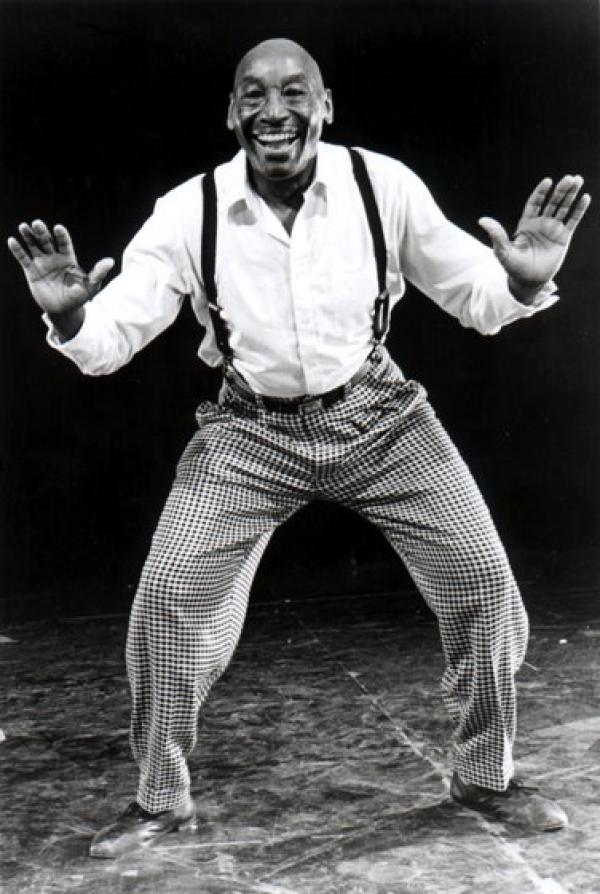Frankie Manning

Photo by Ralph Gabriner
Bio
Frankie Manning was born in Jacksonville, Florida in 1914 and moved to Harlem at the age of three, growing up with the social dances in vogue at the time. When he was 14, he started playing hooky from his Sunday afternoon church activities to go to the afternoon dances for teenagers at the Alhambra Ballroom, where he first learned the Lindy Hop. He says of his early dance years, "When I was older, I started going to the Renaissance Ballroom. The Alhambra was like elementary school, the Renaissance was high school. And by the time you got on to the Savoy [Ballroom], that was the big time, you was at college." Savoy bouncer Herbert "Whitey" White organized a dance team, Whitey's Lindy Hoppers, and in 1934 invited Manning to join. Manning soon became the group's choreographer and introduced synchronized ensemble dancing, a more horizontal dance posture, evoking a sense of wild abandon, and "freeze" steps, in which the dancers would suddenly stop. More importantly, in a dance competition at the Savoy, he premiered his invention, the "aerial," in which he and his partner locked arms back-to-back and he catapulted her in a somersault over him, she landing face-to-face in front of him. His innovations also catapulted Whitey's Lindy Hoppers to fame and professional careers, including appearances at the Alhambra Theater with the Cotton Club Revue of New York. Until he was drafted in 1942, he and the group appeared in the leading venues and with the leading swing bands of the time -- Count Basie, Benny Goodman, Louis Armstrong, and others -- and in dance scenes of movies such as Radio City Revels, A Day at the Races, and the Marx Brothers' Hellzapoppin'. The cover photo of Life featured Frankie Manning and Ann Johnson doing the Congaroo, a combination of the conga and Lindy Hop. Over his career, he would appear with Bill Bojangles Robinson, Josephine Baker, Sarah Vaughn, Ella Fitzgerald, Tony Bennett, Sammy Davis, Jr., and many other popular entertainers. He also consulted on and appeared in the movie Malcolm X, directed by Spike Lee.
As the swing dance vogue faded, Manning took a job with the Postal Service, where he worked for 30 years, dancing only socially. His "rediscovery" in the mid-1980s thrust him to the forefront of the swing dance revival. Since then, he has steadily performed and taught both in the U.S. and abroad. He became the choreographer for the New York Swing Dance Society; choreographed shows in London, Sweden, and the U.S.; was profiled on the television program 20/20; and won a Tony Award for his choreography in the Broadway show Black and Blue.
On the Web
You can order historic videos of Frankie Manning from the the SavoyStyle Swing Dance Shop web site and see Quicktime samples of Frankie in the "glory years of the Swing Era." Go to the "Historic Videos with Frankie Manning" section and scroll down. Follow the links to specific videos, then click on the Quicktime link. This is a great way to see the remarkable range of Frankie's talent.

